Check valves, abbreviated as CV, also called non-return valve or one-way valve, is a mechanical device designed to allow fluid (liquid or gas) to flow through it in one direction only. It essentially permits the flow of fluid in one direction while preventing or restricting flow in the opposite direction. This is achieved through the use of a movable element, such as a disc or a ball, which allows fluid to pass in the desired direction but blocks the flow when it tries to reverse.
They are self-acting, meaning they operate automatically and do not require any outside inputs for it to operate. This means that they will keep working if the processing plant loses electricity or instrument air. When operating properly, the valve is kept open by the force developed by the velocity in the line. When the flow stops or reverses, the valve closes. These valves are opened, and kept in the open position, by the forces developed by the velocity. When the flow rate slows or stops, the valve closes. The seating load and tightness is dependent upon the amount of back pressure.
Check valves are commonly used in a variety of applications and industries to prevent backflow, which can occur when the direction of fluid flow needs to be controlled. They are often installed in pipelines, plumbing systems, pumps, compressors, and other fluid-handling systems. The specific design and type of check valve chosen depend on the application requirements and the characteristics of the fluid being handled.
Check Valve Design Classification
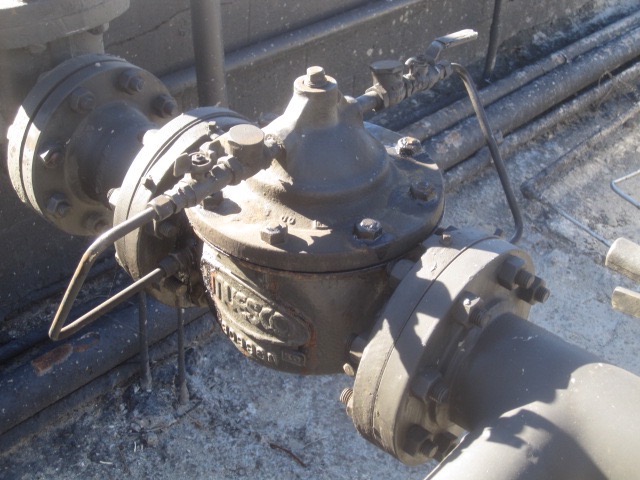
Back Pressure Check Valve - They are normally closed valves. The mechanism is spring loaded to hold the valve in the closed position and stops the possibility of flow through the system. When flow starts into the container, pressure overcomes the spring force and opens the check. As soon as flow stops or reverses, the check closes. They can have regulators in which the pressure can be adjusted to the desired flow. The action prevents the escape of the contents in the event of accidental breakage of the piping or fittings. These check valves may also be installed in piping where flow must be limited to one direction.
Ball Check Valve - Much like a swing check valve but instead of having a gate or guided disk, uses a ball to control flow. The ball is inside the body and free to rotate on the seat moving up and down inside the valve. The seat is machined to fit the ball, and the chamber is conically shaped to guide the ball into the seat to seal and stop a reverse flow. It is possible to choose a lighter ball if the pump capacity is not sufficient, and if water hammer occurs when the pump stops. It may be solved by selecting a heavier ball. This valves is often preferred for use in pumping stations that are rarely attended, since they demand only limited maintenance.
Diaphragm Check Valve (membrane valve) - These valves are made up of a valve body with two ports, a diaphragm and a seat. The diaphragm rests upon the seat in order to close the valve. A self-centering disc or rubber flexing diaphragm acts as the mechanism for preventing reverse flow. As inlet pressure increases, the diaphragm opens and allows the substance to flow through. While default open diaphragm valves don’t require any cracking pressure due to the free floating elastomeric diaphragm, valves that default to a closed state rely on inlet pressure to counter the fixed diaphragm’s elasticity.
Dual Plate Check Valve - A single-piece body construction with two spring-loaded plates hinged on a middle hinge pin. The plates close by the action of the torsion spring before flow reversal takes place when the flow is reduced. A dual plate check valve is lighter and more compact than a conventional swing check valves. This valve takes less space in a pipe run where space could be a problem and can be installed in a horizontal or vertical up positions. With a spring loaded, dual plate design and the discs open 85°, it ensures a low pressure drop with very low cracking pressure. The valve has positive sealing under most conditions and closes before the flow reverses at zero velocity. With the spring to assisted in closing, water hammer is pretty much eliminated. The way the valve is designed it is fundamental non-slamming because the plates closing before the product flow reverses.
Dual Plate Wafer Check Valve - Placed between two flanges with bolting around the outside of the valve.
Dual Plate Lug Check Valve - Clamped between flanges with the bolting passing through the body of the valve.
Dual Plate Flange Check Valve - Installed the same way any other flanged valve is, studs and nuts per flange.
Duckbill Check Valve - The flexible rubber duckbill valve is normally closed but will open with very minimal head pressure, always providing maximum flow with minimal pressure drop across the valve. This valve will even handle large obstructions without jamming or binding, and guarantee trouble free back flow prevention, and can even seal around trapped or suspended solids with minimum back pressure.
Foot Check Valve - A foot valve is a type of check valve that is specifically designed for the end of your pumps suction line. Foot valves help keep a pump primed therefor stopping your pump from burning out.
Lift Check Valve - A check valve that is very much like a piston check valve where the flow lifts a disk when the valve is open. The upstream side of the lift check is under the disk and the flow flows up through the disk. Spring loaded lift check valves can be installed in the piping in almost any mounting position. Compared with swing check valves their head losses, are higher as the deflection of the flow is much more significant. Lift check valves are preferred when applications require smaller nominal diameters.
Non-slam Check Valve - Non-slam check valves are lift type non return valves used in pipelines to prevent backflow of the fluids with elimination of water hammer effect and hence reducing resultant pressure swings, vibrations and damage. Their application is found throughout the chemical processing industry, steam condensate systems, power generation industry, textile industry, water treatment, boilers etc. These valves are used in process line, hot & cold water system, heating system, oil lines etc.
Nozzle Check Valve - This valve is designed specifically for fluid, gas, or slurry is pumped in a low pressure or otherwise intermittent flow. They are meant to close quickly and quietly during low pressure and no-flow periods, and can be used to prevent the liquid, gas, or slurry from flowing in the reverse direction. The shutoff mechanism is a disc, which is held against the seat by an internal spring. When the pressure against the disc at the inlet overpowers the closing
force of the spring, the
spring compresses. When the fluid flow slows or stops, the spring automatically closes the valve.
Piston Check Valve - This type of valve does not need an actuator or valve operator. A piston check valve is designed with a cylinder and a piston providing cushioning effect when the valve is operating. Guides help to alignment of the disc and seat configuration when the piston closes. The fluid flow rate and pressure forces the valve disc to float on the seat which then allows fluid to pass through the valve. The valve closes when the fluid tries to reverse the direction of flow in which the disc is assisted by its
weight and
gravity.
Pneumatic Check Valve - A pneumatic valve, commonly referred to as a directional control valve blocks or diverts the flow of compressed air or other gases within a system. These valves are used to drive other components such as an actuator, gripper, hand tool or other device and are also used to pilot other valves.
Silent Check Valve - Also known as poppet check valves, avoid water hammer or shock by closing before fluid flow reversal. The benefit of a silent check valve is that they close quickly and smoothly, which prevents damage to surrounding materials.
Spring Loaded Check Valve - These valves are normally closed with a straight flow poppet design, allowing free flow in one direction, while preventing flow in the opposite direction. The internal spring enhances the sealing and the immediate closing properties of the check valve. Being spring loaded these check valves are suitable for installation in any position, horizontal, vertical or otherwise.
Stop Check Valve - This valve is essentially, two valves built into one. A spring loaded y-check valve or a lift check valve with a manual override feature. An external mechanism can be used to maintain the valve in an open or closed position. A stop check valve can function as two valves in one, a flow regulating valve and a backflow preventing valve. They are commonly used in power plants, boiler circulation, steam generators, turbine cooling, and safety systems.
Swing Check Valve - It is inexpensive and simple to operate and repair. This valve consists of a valve body, a cover, and a disk that pivots about a hinge pin. The disk swings away from the valve seat. This allows the flow to move in the forward direction, and it moves back to valve seat when upstream flow is stopped. The disc in a swing check valve has no guidesd as it fully opens or closes. The siwng check valve allows full, unobstructed flow and automatically closes as pressure decreases. These valves are fully closed when flow reaches zero, in order to prevent backflow.
Tilting Disk Check Valve - Is a check valve where the disc has a pivot point at the center of the disc. It is also known as a tilt check valve or a tilting disk check valve. In this self actuated valve, valve disk lifts off of the seat to open the valve. The design of the disk allows it to float on the flow. Valve disk stops built into the body position the disk for optimum flow characteristics. A large body cavity helps to minimize flow restriction. As flow decreases, the disk starts closing and seals before reverse flow occurs. The back pressure against the disk moves the seat for tight shutoff without slamming. If the reverse flow pressure in the valve is insufficient to cause a tight seal, the valve may be fitted with an external lever and weight.
Check Valve Advantages and Disadvantages
|
|---|
| Advantages | Disadvantages |
|---|
- Quick to react.
- Control valves prevent the water hammer impact.
- Capable of withstanding both high and low pressures.
- A low pressure drop triggered by control valves helps to save electricity.
- These valves stop chattering.
- Check valves cause a decrease in downtime.
- Prevent low output due to valve failure.
- There are only a few moving pieces.
- The risk of valve failure by check valves is significantly reduced.
- Equipment such as pumps and compressors are secured from damage due to backward flow by control valves.
- Since they have smaller mobile modules, control valves have low maintenance costs.
- The footprints are smaller in more recent models of check valves than traditional control valves.
- Without many modifications and mod mods, check valves can be used interchangeably.
|
- The internal parts of a check valve cannot be assessed.
- Check valves have certain limitations on installation configurations.
- A valve disc can sometimes stay stuck in an open position, and this can cause problems.
|
Check Valve Design Considerations
The following design considerations are offered in the specification of check valves for typical process plant applications:
- While it may be tempting to add a check valve directly to a valve to eliminate a weld during fabrication. While a weld is eliminated, it makes assembly more difficult. When two valves are connected flange-to-flange, the valve bodies make it difficult to insert the bolt into the bolt hole.
- Do not use check valves in vertical lines the flow is downward. In this configuration, the valve won’t close and it loses the ability to do its job properly.
- Dual and single-plate wafer check valves should not be used for reciprocating compressor or reciprocating pump applications. The pulsation can lead to pulsation induced fatigue which will cause the spring to fail prematurely.
- Ball or piston check valves should not rely only on flow reversal to close the valve. These types of check valves should either use gravity to assist closure (vertical orientation, flow up) or use a sprint to assist closure.
- Lift check valves should not be used in services subject to fouling, coking deposits, or erosion.
- A check valve should never be used as an isolation valve. Ever.
- Consideration should be made for isolation and gauges to periodically check whether or not the check valve is functioning as intended.
Check Valve Datasheets
The following are links to our datasheets that contain dimensional information on various types of check valves. Abbreviations that are used in the descriptions are:
- CI - Cast Iron
- DI - Ductile Iron
- CS - Carbon Steel (Note that materials may be substituted for carbon steel such as Stainless Steel. Check with your valve vendor for materials)
Dimensions shown are in inches unless otherwise noted.
|
|---|
| | ANSI 125 | ANSI 150 | ANSI 250 | ANSI 300 | ANSI 600 | ANSI 900 | ANSI 1500 | ANSI 2500 |
|---|
| Angle Stop |
|
|
Valve - Check, Angle Stop, ANSI Class 250, CI (in) |
|
|
|
|
|
|---|
| Dual Plate |
Valve - Check, Dual Plate, ANSI Class 125, CI DI (in) |
Valve - Check, Dual Plate, ANSI Class 150, CS (in) |
|
Valve - Check, Dual Plate, ANSI Class 300, CS (in) |
Valve - Check, Dual Plate, ANSI Class 600, CS (in) |
Valve - Check, Dual Plate, ANSI Class 900, CS (in) |
Valve - Check, Dual Plate, ANSI Class 1500, CS (in) |
Valve - Check, Dual Plate, ANSI Class 2500, CS (in) |
|---|
| Stop Check |
|
|
Valve - Check, Stop, ANSI Class 250, CI (in) |
|
|
|
|
|
|---|
| Swing Check |
Valve - Check, Swing, ANSI Class 125, CI (in) |
Valve - Check, Swing, ANSI Class 150, CI (in) |
Valve - Check, Swing, ANSI Class 250, CI (in) |
Valve - Check, Swing, ANSI Class 300, CI (in) |
Valve - Check, Swing, ANSI Class 600, CS (in) |
Valve - Check, Swing, ANSI Class 900, CS (in) |
Valve - Check, Swing, ANSI Class 1500, CS (in) |
Valve - Check, Swing, ANSI Class 2500, CS (in) |
|---|
| Tilted Disk |
Valve - Check, Tilted Disk, ANSI Class 125/250/150, CI DI (in) |
Valve - Check, Tilted Disk, ANSI Class 125/250/150, CI DI (in) |
Valve - Check, Tilted Disk, ANSI Class 125/250/150, CI DI (in) |
|
|
|
|
|
|---|
Check valve Datasheets
|
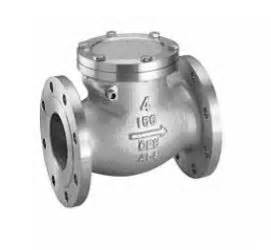 |
- Check Valve, Swing
- ANSI Class 150, CI (in)
- ANSI Class 300, CI (in)
- ANSI Class 600, CS (in)
- ANSI Class 900, CS (in)
- ANSI Class 1500, CS (in)
- ANSI Class 2500, CS (in)
- ANSI Class 125, CI (in)
- ANSI Class 250, CI (in)
- ANSI Class 150-2500, CS, Weight (in)
|
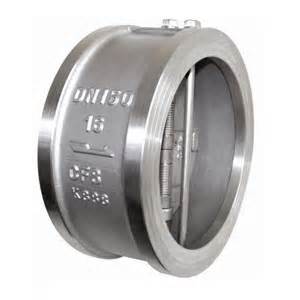 |
- Check Valve, Dual Plate, Wafer, Lug, Flange
- ANSI Class 150, CS (in) W, L, F
- ANSI Class 300, CS (in) W, L
- ANSI Class 600, CS (in) W, L, F
- ANSI Class 900, CS (in) W, L, F
- ANSI Class 1500, CS (in) W, L, F
- ANSI Class 2500, CS (in) W, L, F
- ANSI Class 125, CI (in) W
|
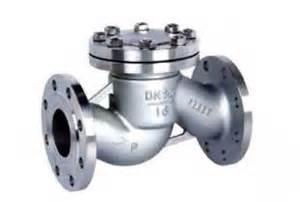 |
|
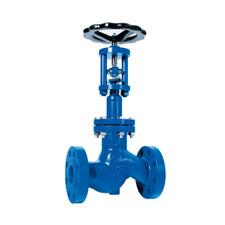 |
|
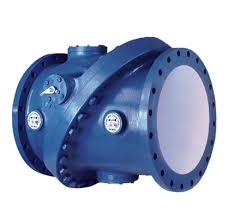 |
|
 |
|











